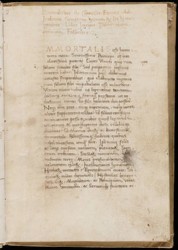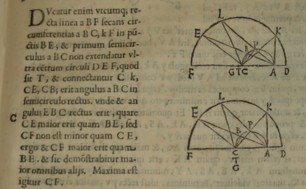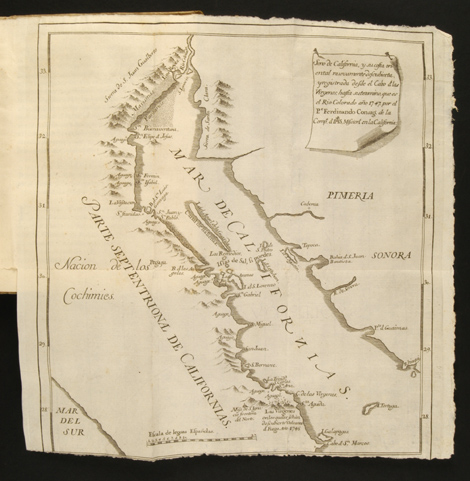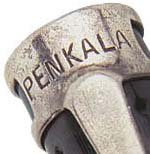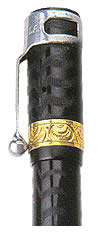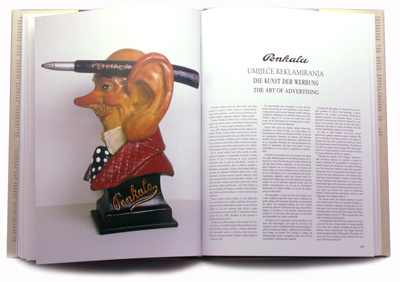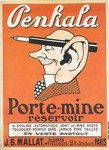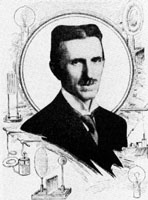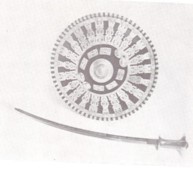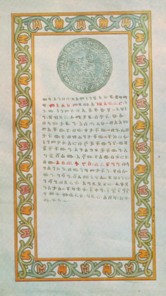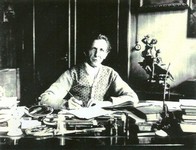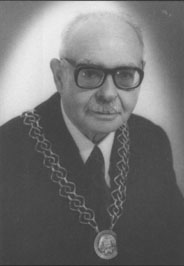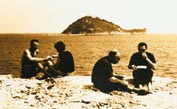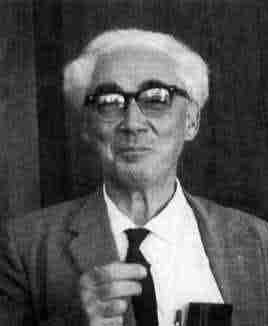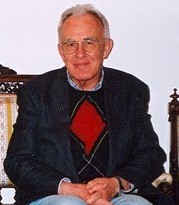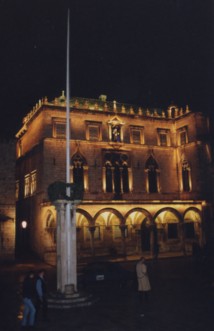Croatian Medicine
History of Croatian Science
© by Darko Zubrinic, Zagreb (1995)
In this section we should again mention the names of Mark Antun Dominis and Rugjer Boskovic (1711-1787), whose work was veritably encyclopaedistic.
The first known manual about book-keeping was Della mercatura e del mercante perfetto, (On merchantry and the perfect merchant) written in 1458 by Benko Kotruljic or Benedikt Kotruljevic (Benedictus de Cotrullis, born in Dubrovnik, 1416-1469). It is also the oldest known manuscript on double-entry. As such it precedes Luca Pacioli's description of double-entry for no less than 36 years, so that Kotruljic's priority is indisputable.

Kotruljic's famous 1464 manuscript on book-keeping,
was printed in 1573 in Venice; editor and publisher was
another oustanding
Croatian scholar - Franjo Petris
The French translation of Kotruljic's book appeared under the title "Parfait négociant" in Lyon in 1613.
In the book he states the following: "I declare that a merchant must not only be a good writer,accountant and book-keeper, but he also has to be a man of letters and rhetorician."
His another important manuscript is Benedictus de Cotrullis: "De Navigatione", 1464, written also in Italian. It is the first known manual on navigation in the history of Europe. Note that it appeared almost 30 years before the discovery of America. The book has been frequently copied throughout Mediteranean.

Benedictus de Cotrullis: De Navigatione,
1464;
photo from Beinecke
Rare Book & Manuscript Library
The original manuscript is kept at the University of Yale (in the Beinecke Rare Book and Manuscript Library, MS 557), and has 132 pp. See
- Darko Novakovic (discoverer of the book): Novopronadeni rukopis Benedikta Kotruljevica De navigatione, in Dubrovcanin Benedikt Kotruljevic : hrvatski i svjetski ekonomist XV. stoljeca. - Zagreb, Hrvatska akademija znanosti i umjetnosti : Hrvatski racunovoda, 1996. - ISBN 953-96998-0-0. - pp. 19-32.
- Benedikt Kotruljevic: De navigatione / O plovidbi, Zagreb 2005., ISBN 953-6310-37-6 (parallel Italian-Croatian edition)
- Dubrovcanin Benedikt Kotruljevic, Hrvatski i svjetski ekonomist XV. stoljeca, HAZU, Zagreb 1996. (radovi s konferencije)
- Beinecke Rare Book & Manuscript Library, Yale University (write in MS 557 and search; 20 pages of the book can be seen)
- Benedetto Cotrugli: De Navigatione, online book
In this book Kotruljevic mentions places like Bocari (Bakar), Braca (Brac), Dalmatia, Fiume (Rijeka), Illirico (Croatia), Mare Adriatico, and many other, throughout Europe, Africa and Asia. In Chapter XXXXVIII (i.e. Ch XLVIII) he also mentions that in Popovo near Dubrovnik [25 km NW of Dubrovnik, near the village of Ravno] there is a huge cave [Vjetrenica] with miraculous wind: at the entrance the air is colder in the summer than in Italy in the winter.
On the islet of Kosljun near largest Croatian island of Krk there is a beautiful Franciscan monastery, which had one of the oldest "banks" in Europe. It was operational from the 17th to 19th century, providing loans for the poor at low interest rates, to protect them from exploiters. See "What's on Kvarner," p. 81, available at Appleby.
Frederik Grisogono (born in Zadar, 1472-1538), a mathematician, physicist, astronomer and physician, was educated in Padova, where later he became a university professor. His commentaries on Euclid's `Elements' were published in his book Speculum astronomicum terminans intellectum humanum in omni scientia, Venice in 1507. His most important contribution was the theory of tides, based on the attraction of the Moon, which influenced Mark Antun Dominis. He discovered the antipodal tidal wave. His theory of tides is described in De modo collegiandi, pronosticandi et curandi febres, nec non de humana felicitate ac denique de fluxu et refluxu maris, Venice 1528.
Juraj Dragisic (Georgius Benignus), Franciscan born in the famous Bosnian town Srebrenica, suggested a reform of the Julian calendar to Pope Leon X in 1514 in his study Correctio erroris, which was accepted by the Pope Gregory XIII. The new, Gregorian ca lendar is in use since 1582.
Giulio Camillo Delminio (1479-1544), a famous but forgotton Renaissance thinker, was born from parents of Croatian origin. According to Frances A. Yates he was "one of those people whome their contemporaries regard with awe as having vast potentialities". She wrote the monograph The Art of Memory (1966) devoted to Delminio. Giulio Camillo Delminio is most famous for his Theatre of Memory (or Memory Theatre), conceived as an encyclopaedic memory aid, and described in his book L'Idea del Theatro, published posthumously in 1550 in Venice. It consisted of of hundreds of images which were arranged on the tiers of an amphitheatre.
His name Delminio reveals that his parents are from Delminium. The meaning of the name of Delminium in Latin is pasture for sheep, and the name of Dalmatia has been derived from it (see Catholic Encyclopedia - Dalmatia), also the name of Duvno. Many thanks to Mr. Ivo Dubravcic, Delft, for his first information about Giullio Delminio. Delminio's parents of Croatian origin are mentioned in the book Between the Cross and the Crescent, A selection from the Dubravcic Collection (by Pietro Mastruzo & Rita Colognola), Leiden University Library, Leiden 2005, p. 33.
Vinko Paletin (1508-1575), born in the noble family on the island of Korcula, arrived to Mexico as a young missionary. Later, after his studies in Italy, he became professor of mathematics in Vicenza. For several years Paletin was employed on diplomatic missions for the Spanish King Philip II. He translated from Spanish into Italian the work about navigation written by the Spanish cosmograph Pedro Medina (L'arte del naviger, Venice, 1554). Paletin's most important work is De jura et justitia belli contra Indias, preserved as manuscript in Latin, and a more extensive version in Spanish (Croatian translations exist since 1978 and 1979). He mentioned that builders of Maya pyramids in Chichen-Itza, Mayapan and Uxumal, as well as builders of huge basalt heads, were in fact old Cartagians which according to antic authors sailed off long ago across Gibraltar, and discovered the New World (Hesperids). Maya Indians recounted to Paletin an old legend about "the arrival of bearded people from far away". For more details see [Zoric].
 The first technical discoveries
are related to the name of Faust
Vrancic (lat. Faustus Verantius, italianized
name Fausto Veranzio, hungarized name
Faustus Verancsics, 1551-1617).
It is known that he collaborated with Tycho Brache and
Johannes Keppler. Vrancic was fluent in at least seven
languages. At the court of King Rudolph II in Hradcani in
Prague
(Rudloph II was Roman-German Emperor and Croatian-Hungarian
King) he worked as his secretary, and in that period
completed his important dictionary of five most
noble European languages (Dictionarium
quinque nobilissimarum Europeae linguarum: Latinae, Italicae, Germanicae,
Dalmaticae et Hungaricae) and published in Venice
in 1595. He is best known for his book of inventions
in
Machinae Novae, published also in Venice in 1595.
The book was financially supported
by the French King Louis XIII, and the Toscan Duke Cosimo
II de Medici.
Among his numerous inventions the most famous is the
parachute, which
he tested in Venice. It is true that Leonardo da Vinci had a similar
idea earlier, but he made only a rough sketch of it, of
pyramidal shape, while Vranic's parachute had rectangular
shape, as today.
The first technical discoveries
are related to the name of Faust
Vrancic (lat. Faustus Verantius, italianized
name Fausto Veranzio, hungarized name
Faustus Verancsics, 1551-1617).
It is known that he collaborated with Tycho Brache and
Johannes Keppler. Vrancic was fluent in at least seven
languages. At the court of King Rudolph II in Hradcani in
Prague
(Rudloph II was Roman-German Emperor and Croatian-Hungarian
King) he worked as his secretary, and in that period
completed his important dictionary of five most
noble European languages (Dictionarium
quinque nobilissimarum Europeae linguarum: Latinae, Italicae, Germanicae,
Dalmaticae et Hungaricae) and published in Venice
in 1595. He is best known for his book of inventions
in
Machinae Novae, published also in Venice in 1595.
The book was financially supported
by the French King Louis XIII, and the Toscan Duke Cosimo
II de Medici.
Among his numerous inventions the most famous is the
parachute, which
he tested in Venice. It is true that Leonardo da Vinci had a similar
idea earlier, but he made only a rough sketch of it, of
pyramidal shape, while Vranic's parachute had rectangular
shape, as today.
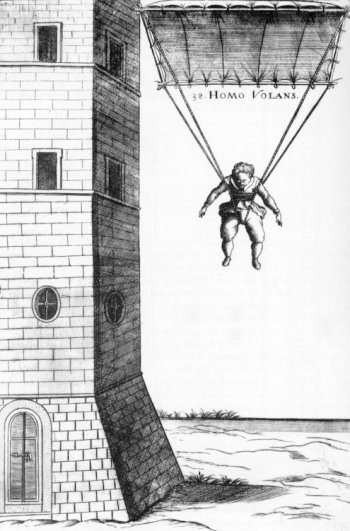

See Faust Vrancic (by dr. Vladimir Muljevic, in Croatian)
For example, the famous Verrazzano Narrows Bridge is the largest suspension bridge in the USA (New York, 1298 m), see also Historical Develpment of Iron and Steel in Bridges.
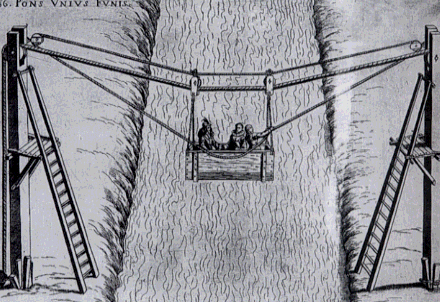
See Vladimir Muljevic: Hrvatski znanstvenici Antun i Faust Vrancic, Encyclopedia Moderna, god. 14, II, Zagreb, 1993. I express my sincere gratitude to Professor Emeritus V. Muljevic for this information.
Vrancic also described in his book Machinae Novae the first wind turbine:

- in 1965 by "Heinz Moos Verlag", Munich, Germany (F. Klein, A. Wisner), translated into five languages,
- in 1968 by "Ferro", Milano, Italy (Umberto Forti), in Italian
- in 1985 by "Magveto", Budapest, Hungary, in Hungarian,
- in 1993 by "Novi Liber", Zagreb, Croatia (Vladimir Muljevic,
Zarko Dadic), in Latin and Croatian
(from the introduction:
"...This book is issued in dramatic time for Sibenik and its environs, for Dalmatia, and the whole of Croatia [that is, issued during Greater Serbian 1991-1995 aggression on Croatia]. The aim and importance of this book should be close and clear to any civilized person: it radiates with Renaissance spirit of activism and optimism that we also wish to develop in our time, despite all misfortune brought to us by imposed war...")
Nikola Sorgoevic, a sea captain from Dubrovnik (born on the island of Sipan), wrote several books on navigation, shipbuilding, and tides, and three of them have been preserved. Two of them have been published in 1574 in Venice, soon after his death in 1573.
Franjo Petris (Franciscus Patricius, a Croat born on the island of Cres, 1529-1597), a philosopher, mathematician and astronomer, was lecturing at the University of Ferrara and in Sapienza in Rome. During his stay on Cyprus (then belonging to Venice) he created a rich collection of Greek manuscripts, that finished in the Escorial. With his philosophical views of neoplatonism and sharp anti-aristotelism he influenced Giordano Bruno. His most important books are Nova de universis philosophia (New General Philosophy) and La citta felice (A Happy Town), published in Padova, treating the organization of ideal society, a forerunner of Campanella's "Civitas Solis" (1623). He is buried in the Torquato Tasso tomb in the church of St Onofrius in Rome.
Dominis, Mark Antun, (1560-1624)
Marin Getaldic - Ghetaldus (1568-1622) born in Dubrovnik, was the most outstanding Croatian scientist of his time. He studied in Italy, England and Belgium. His best results are mainly in physics, especially optics, and mathematics. Among his numerous books let us mention Promotus Archimedus (Rome, 1603) and De resolutione et compositione mathematica (Rome, 1630, in five voluminous books), in which Getaldic appears as a pioneer of algebraization of geometry.
De resolutione et compositione mathematica libri qvinqvi(Rome, 1630, 343 pp., 22.5 x 31.8 cm), published eight years after his death; a detail from Lemma XXI; Getaldic is considered to be the main predecessor of Analytic Geometry.
His contributions to geometry had been cited by Christian Huygens and Edmond Halley.

Marin Getaldic, a portrait kept in Rector's Palace in Dubrovnik
Getaldic is the constructor of the parabolic mirror (diameter 2/3
m), kept
today in the National Maritime Museum in London.
During his sojourn in Padova he met Galileo Galilei, with
whom he corresponded regularly.
He was a good
friend
to the French mathematician F. Viéte. The fact that the
post of professor of mathematics had been offered to him in
Louvain in Belgium, at that time one of the most famous university
centers in Europe, proves his high scientific
reputation.
A Venetian Paolo Scarpi wrote about him:
In mathematics he was like a demon, and in his heart - like
an angel.
- Marini Ghetaldi: Promotus Archimedus, Rome 1603 (online book provided by the Archimedus Project)
- Marin Getaldic (in Croatian)
One of the most outstanding Dubrovnik mathematicians, physicists and astronomers of the 17th century was Stjepan Gradic (1613-1683), who was a Director of the Vatican Library. Some of his experimental results are cited by Jacob Bernoulli, and his tractate about navigation incited Gottfried Wilhem Leibniz to discuss the problem of steering ships using helms. Gradic's book Disserationes physisco-mathematicae quatour was published in Amsterdam in 1680. He died in Rome, where according to his last wish he was buried in the Croatian church of St. Jerome.
Ivo Puljizic, born in Pucisce on the island of Brac, made irrigation plans for the Vatican and projected various Vatican bell-towers in the time of Pope Innocent X, 17th century.
Quite a number of Croats took part in the first Christian Missions, especially in South and North America and Asia. Ferdinand Konscak, or Fernardo Consag (born in Varazdin, 1703-1757), was a Jesuit and a Croatian missionary in North America. In 1752 he discovered that Baja California was not an island, as it had been believed until then, but a peninsula. There is a collection of rocky islets on the north of the Californian bay named in his honour as the Consag Rocks (Consag Rocas, or Roca de Consag, near San Felipe).
Denis Diderot and D'Alambert used some of his maps for the French Encyclopedia, see "Encyclopedie", Supplement 5 Carte (Paris 1755-1780), where his name is cited as P. Consaque. Alexander Humbolt used his maps for his "Carte generale... de la Nouvelle Espagne", Paris, 1804, and also Arrowsmith in his "Map of America", London 1805.
Konscak spoke various dialects of local Indians, in particular a very difficult dialect of Cochinin Indians. He described a sort of boomerang that Indians used for hunting rabbits. His diaries were printed already during his lifetime (published by Villa-Senor y Sanchez, Ortega-Balthasar and Venegas-Buriel), and after his death translated into many languages. The 1761 copy of Konscak's manuscript about California is held in The British Museum. His work Carta del P. Fernando Consag de la Compania de Jesus, Visistaro de las Misiones de Californias (43 pages) is kept in the British Museum in London, Library of Congress Harper in Washington, John Carter Library in Providence, Library of Pomona College in Pomona, Henry E. Huntington Library in San Marino.
His life is described by outstanding american historian Peter Masten Dunne in his monograph Black Robes in Lower California, Los Angeles, 1952. Seven copies of his maps are published by Ernest J. Burrus in his work La obra cartografica, Madrid, 1967. In his 2000 monograph Zoric proved that Konscak was the author of important work Addiciones a las noticias contemidas en la Description compnediosa de lo descuviert y conocido de la California. Since Konscak discovered many springs of pouring water, it is not surprising that even today there exist shops and warehouses in California bearing his name: "Licores Konsag", "Konsag Liquor Store and Mini Market", "Konsaqua" (agua purificada) etc. For many more details see [Zoric] and [Gabric].
In his Addiciones... Konscak described the following amusing event with an (illiterate) Indian who had to carry a written message and a loaf of bread from one missionary to another. The Indian ate the bread on his road, and gave only the message to the missionary, without knowing that the message said among others that he had to bring bread as well. Being asked about the bread, the Indian said that he knew nothing about it. When the missionary told him that he ate it, he retorted "Who told you that?". The missionary answered "The paper that you brought told me that!" The next time the Indian was again asked to carry two loafs of bread and another written message. On his road he was passing by a huge rock, where he left the message, went with his loafs round the corner (so that the paper could not "see" him), and ate them. To his utmost amazement, the paper told the missionary not only that he ate the bread, but also how many loafs he ate. The Indian, having admitted that he indeed ate the bread, nevertheless claimed that it was impossible that the paper could see him eating the bread: "...I hid the paper so that it could not see me...The paper is the chatterer that speaks about things it did not see". Taken from [Zoric, pp. 177-178].
Ignacije Szentmartony (1718-1793) was a Croatian Jesuit born in Croatian north (Kotoriba in Medjimurje), of a Croat mother and Hungarian father. After his studies in Vienna and Graz he lectured mathematics in Graz. In 1751 he went to Lisabon, where he obtained the title of royal mathematician and astronomer, and as such was designated to be a member of expedition for determining borders. In 1753 he sailed off from Portugal to the mouth of Amazon river for geographic research there. Only a small amount of his work is preserved to these days: two maps of the Amazon and Rio Negro. By the end of his life, upon return to Croatia, he wrote the first Croatian kajkavian grammar for Germans: Einleitung zur kroatischen Sprachlehre für Teutschen, Varazdin 1783. For more information see [Zoric].
Rugjer Boskovic (1711-1787), the greatest Croatian scientist in history
The first balloonist in Croatia was Karlo Mrazovic, who performed two balloon flights in Zagreb with his own balloons in 1789 and 1790. He was born in Boka kotorska. See [Croatia - Europe, III, Barok i prosvjetiteljstvo, p. 426, the article by Vladimir Muljevic].
Simun Stratik (Simone Stratico, 1733-1829), outstanding specialist in nautical theory, was born in Zadar (in the family of Schiavoni which came to Zadar from Crete). He lectured mathematics and nautical theory in Padova, and then nautical theory at the University of Pavia. By the end of his life he prepared a new edition of Vitruvius' famous Architecture (1825) in four books accompanied with 320 tables. He published among others
- his translation into Italian (published in Padova in 1776) and his commentaries to the book of a famous Swiss mathematician Leonhard Euler Theorie complette de la construction et de la manoeuvre des vaisseaux (1733); Euler's text has 360 pp, and Stratik's commentaries 180 pp; the translation into Italian appeared before English and Russian translations;
- three language nautical dictionary Vocabolario di marina in tre lingue (Milano, 1813), Italian-French-English (in three books, the first book has more than 500 pp); the fourth book was also planned, but never issued.
Ludwig (Ljudevit) Mitterpacher von
Mitterburg (Mitterburg = Pazin in Istria, 1734 - 1814), was born
in Bellye (Bilje in eastern Croatia, near Danube river) and educated in Austria.
He studied mathematics
and theology at Vienna University and was appointed a teacher of
religion in 1762. In 1777, Mitterpacher became the first professor
of the newly-established agricultural faculty at the Pest University,
a position he kept until his death. A very popular lecturer,
Mitterpacher also wrote several schoolbooks and lecture notes.
His most significant work was the three-volume
Elementa rei Rusticae, a comprehensive study of agricultural
science and practice. Subjects included cultivation, plant-growing,
horticulture, vine-growing, forestry, animal husbandry and food processing.
His books originally written in Latin language were translated into several
languages and became important works of reference for contemporary science.
Mitterpacher became a member of the Academy of Sciences in Bologna.
Many thanks to Mr. Darko Varga
(from Bilje, Baranja) for having contributed
and Mittepacher's biography to
this web.
Filip Vezdin or Wesdin (Paulinus a Sancto Bartolomaeo, 1748-1806), pioneer of European indology, was born in a Croatian village of Cimov (Hof am Leithagebirge) in Lower Austria in Burgenland (Gradisce). He completed his studies of philosophy and theology, Roman languages and English in Linz and Prague. Besides native Croatian he spoke Latin, Greek, Hebrew, German, Hungarian, Italian, Portuguese and English. As a Carmelitan missionary (with monastic name Paulin of St. Bartholomew) Vezdin was sent to India in 1776, where he learned Sanskrit and several Indian dialects.
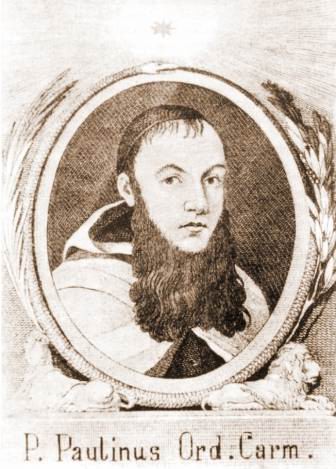
For more information see Filip Vezdin (in Croatian)
Vezdin is the author of Sidharubam seu gramatica samscrdamica, the first printed Sanskrit grammar in Europe, published in 1790 in Rome. Extended edition was published in 1804 and entitled Vyacarana seu locupletissima samsrdamicae linguae instituio.
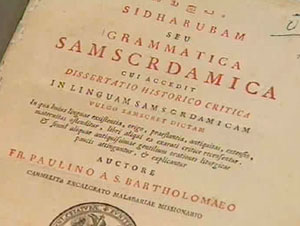
The first printed Sanskrit grammar
in Europe, written by Filip Vezdin in 1790,
photo from volksgruppen.orf.at/hrvati/visti/stories/45925/
He wrote numerous works on Indian culture, and in addition to Sanskrit also learned Malayalam, the Malabar coastal language, in which he wrote his works as well. At the request of a local ruler, King Rama Varmer of the Travancore, he wrote an English-Portugese-Malayalam grammar. The King, enthusiasted with Vezdin's fluency in Malayalam, asked him to be his teacher of English and Portuguese in his palace in Padmanabpuram. Vezdin's works are kept in Rome, Vienna and Uppsala. The first methodical study of connections between Indo-European languages is contained in his work De antiquitae et affimitate lingaue zendicae, samscrdamicae et germanicae disseratio, Rome 1798.
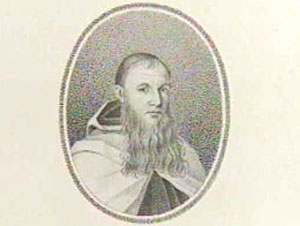
Filip Vezdin, pioneer of European
indology,
photo from volksgruppen.orf.at/hrvati/visti/stories/45925/
Vezdin's best known work is Systema brahmanicum liturgicum, mythologicum, civile ex monumentis Indicis Musei Borgian Velitris, Rome 1791, dealing with literature, mythology and civil order of brahmanic India, customs and the way of life. His most interesting and most popular work is his travel-book Viaggio alle Indie orientali, Rome 1796. He also published two philological studies about connections between Hungarian and Laponian languages. Vezdin is considered as one of pioneers of European indology.

About twenty of his books were published already during his lifetime. Some of them were translated into German, French, English and Swedish. It is therefore no surprise that he was a member of the Royal Academy in Naples, and of the Academy "Dei Volsci" in Velletri and Padova.
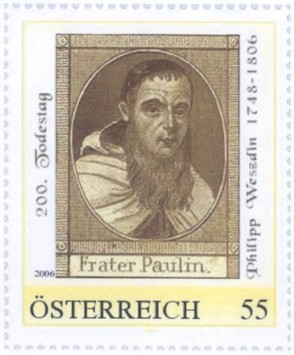
A postage stamp issued by a Cultural Association,
Hof
am Leithaberge, Austria in 2006, commemorating
200 years since Vezdin's death.
Many thanks to Dr Luca Leoni, Velletri.
In 2006 a memorial tablet dedicated to Filip Fezdin was placed in Velletri, a town near Rome, on the building of Museo Borgia (in Via della Trinita), where Vezdin had been working. The tablet mentions his Croatian descent: "Croato del Burgenland". Also, on that occasion an Italian translation of the monograph written by Dr. Branko Franolic about Filip Vezdin was promoted in the City Council of Velletri ("Paolino di San Bartolomeo, pioniere dell'indologia nell'Europa di fine Settecento", translated from the English original by Dr. Luca Leoni).
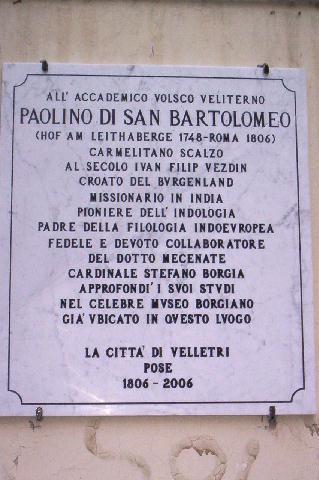
Memorial tablet dedicated to Filip
Vezdin in Velletri, Italy, 2006
Many thanks to Dr Luca Leoni, Velletri, for the photo and his translation:
TO VELLETRI'S VOLSCIAN ACADEMIC THE CITY OF VELLETRI |
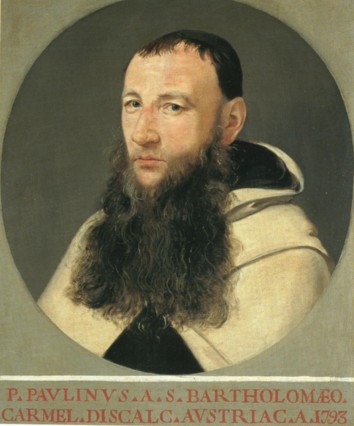
Filip Vezdin, portrait from 1793
probably by J.H. Cabott (1754-1841),
once in cardinal Stefano Borgia's library in "Palazzo Altemps",
Rome,
now conserved in "Propaganda Fide", Rome
(many thanks to Dr
Luca Leoni, Velletri)
Vezdin's research gave a great impetus to investigation of culture and civilization of India in Europe. In 1999 Vezdin's image was carved into the white marble memorial plaque in the City Museum of Trivandrum, the capital of the Indian state of Kerala. Furthermore, the following text was written in the Sanskrit, Malayalam, Croatian and English languages on memorial tablet in the museum:
| Ivan Filip Vezdin, Burgenland Croat, Discalceate Carmelite, with the monastic name Paulin of St. Bartholomew, a missionary in Malabar from 1776 to 1789. The author of the first printed Sanskrit grammar and forerunner of Indian and Indo-European studies to the great honour of his homeland and the Croatian and Indian people. |
| Ivan Filip Vezdin, gradiscanski Hrvat, bosonogi karmelicanin, 1776. - 1789., misionarski je djelovao na Malabaru. Pisac prve tiskane sanskrtske gramatike i preteca indijskih i indoeuropskih studija na veliku cast svojoj domovini te hrvatskom i indijskom narodu. |
For more information see
- Branko Franolic: Filip Vezdin ("Filip Vezdin’s contribution to indic studies in Europe at the turn of the 18th century")
- [Zoric]
- Filip (Philippus) Vezdin (Vesdin), 1748.-1806.
- Luca Leoni: Nel bicentenario della morte del carmelitano scalzo di origini croate che fu pioniere dell’indologia e padre della filologia indoeuropea
- Tomislav Mrkonjic: "Velikan hrvatskih korijena", Glas Koncila, 19 February 2006, p. 18
- Zdravka Matisic: Radost, strah, predanost / Joy, Fear, Dedication; Contribution to the biography of Filip Vesdin Paullinus a Sancto Bartholomaeo, in Croatian and English, Odjel za orijentalistiku Hrvatskog filoloskog drustva i Filozofski fakultet, Zagreb 2006
Franjo Domin (born in Zagreb, 1754-1819), studied physics and theology in Vienna and later became a dean at the Faculty of Philosophy and rector of the University of Budapest. He was among the first who cured various diseases by electrotherapy using static electricity.
The first torpedo was constructed by Ivan Lupis Vukic in the 19th century in Rijeka, where its production had started in 1866 in the Whitehead factory. He was born in the village of Nakovane on the beautiful Peljesac peninsula near Dubrovnik.
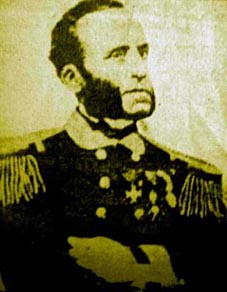


The first ship-screw (propeller) has been constructed by Yosip Ressel in 1827 (the first steamers were constructed with paddles). Joseph Ressel was of the Czech and German origin, working as engineer of forestry in the lovely Istrian town of Motovun. It is interesting that this important discovery was inspired by ordinary spiral corkscrew. The first propellers were tested on a boat in Trieste. The first journey across the Atlantic with screw-driven ship was in 1839 within 40 days, with Ressel's screw improved by Swedish engineer John Ericsson.
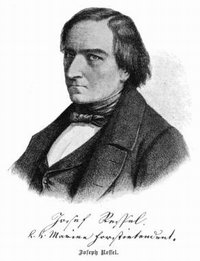
![]()

It has led to contemporary ship-screw:
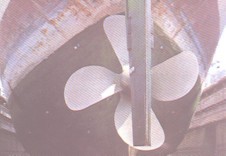
In 1888 Josip Belusic constructed the first
electric speedometer. Belusic was born in the region of Labin in
Istria, and was professor in Kopar. This invention was patented
in Austria - Hungary under the name of "velocimeter."
NOTE: Nikola Tesla (1856-1943) is since recently
credited for this discovery, see
here.
David Schwarz, a Zagreb Jew (1852-1897), invented steerable metal airship that is today unjustly bearing the name of the German count Zeppelin. Indeed, Zeppelin bought the complete project from Schwartz's wife, shortly after his premature death. It is true that in 1897 the `Zeppelin' constructed by Schwartz fell down during its trial flight near Berlin, due to a small technical error in the propeller, having reached the height of 460 m. It was 47.5 m long and had 35 tons.
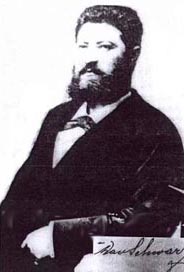

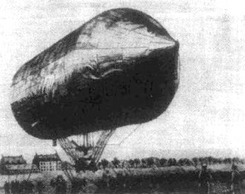

Photos from David Schwarz web site by Ante Sucur
The American Israel Numismatic Association issued two nice plaquettes in honour of David Schwarz, see here.The Croatian Jews left truly remarkable traces in arts, music, science and architecture.
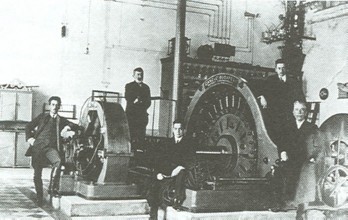
It is not widely known that one of the earliest hydroelectric power plants in the world has been built up in Croatia, on the beautiful Krka waterfalls. It brought light to the city of Sibenik. It was built in 1895, one year before Nikola Tesla's famous power plant on the Niagara falls. The chief engineer was Ante Supuk.
Modern Slavic studies were founded by Vatroslav Jagic (born in Varazdin, 1838-1923), professor of philology at the Universities of Zagreb, Berlin, Vienna, Sankt Petersburg, Odessa. He was a full member of the Petersburg's and Austrian Academies of Sciences. A great importance for the development of Slavic philology had the journal Archiv fur slavishe Philologie that he founded in Berlin, and whose editor in chief he was during 45 years. He also initiated and organized the Seminar for Slavic studies in Vienna in 1887, which later grew out to the Institute of Slavic Studies. His scientific opus is enormous: if collected, it would occupy about 100 books.
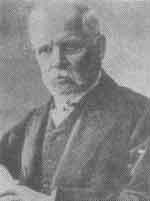
Some important discoveries in the field of Croatian archeology were accomplished by don Frano Bulic (1846-1936). Especially important was a discovery of an inscription on the sarcophagus of queen Jelena (10th century).
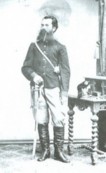 One of the pioneers of telegraphy is Ferdinand Kovacevic
(1838-1913).
He invented the possibility of telegraphic connection along a single
wire (the duplex connection), whereas before four wires had
been used. By the way, Zagreb had its telegraph lines only six
years after the first telegraph lines in the world introduced by
Morse
(Washington-Baltimore, 1844). Telegraph connection with the
Croatian region of Lika, where Kovacevic
was born, had been
established already in 1854. Kovacevic published
several electrotechnical books in Zagreb in German language.
One of the pioneers of telegraphy is Ferdinand Kovacevic
(1838-1913).
He invented the possibility of telegraphic connection along a single
wire (the duplex connection), whereas before four wires had
been used. By the way, Zagreb had its telegraph lines only six
years after the first telegraph lines in the world introduced by
Morse
(Washington-Baltimore, 1844). Telegraph connection with the
Croatian region of Lika, where Kovacevic
was born, had been
established already in 1854. Kovacevic published
several electrotechnical books in Zagreb in German language.
A zoologist of international reputation Spiridion Brusina (born in Dubrovnik, 1845-1908), analyzed and classified 600 fossil species. He has a great merit for popularizing science in Croatia. Natural scientists throughout Europe named in his honor about 50 species according to his name.
Vinko Dvorak (1848-1922), Czech who came from Prague to Zagreb in 1875 and was lecturing physics at the University of Zagreb, was the student of Ernst Mach. He is well known by his discoveries in acoustics, especially about acoustic forces. He was the first constructor of an acoustic radiometer, which has been unjustly attributed to Rayleigh.
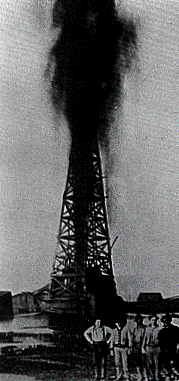 Antun Lucic (americanized name is Anthony F. Lucas;
born in Split 1855, died in Washington 1921)
discovered the first major gusher in Texas,
The Lucas gusher, flowing at the rate of 80,000
to 100,000 barrels per day. It blew in January 1901.
About 50,000 people came to see it.
This meant the earliest massive exploitation of
oil and petroleum in the world.
Antun Lucic, known as Anthony F. Lucas (F. = Francis is after his father
Franjo,
mariner and shipbuilder from the
island of Hvar) believed that the nearby
Spindletop hill, near
the town of Beaumont, covered a
vast pool of oil. His company
became one of the first oil companies in Texas.
Antun Lucic was a mining engineer who completed his studies at
the Polytechnic institute in
Graz, Austria, where also his fellow countryman Nikola
Tesla later
studied.
By 1902, as many as 285 wells were operating on
Spindletop Hill and over 600 oil
companies had been chartered (the population of Spindletop sprang from 8,000
in
1901 to 60,000 in 1902, i.e. in just a year!).
In this way Captain Anthony Lucas
enabled the United States to surpass Russia as the
world's leading oil producer.
With the Lucas gusher, a black-gold rush began,
and fortune-seekers from all over the world poured into Texas.
Over time, Houston became a center of the oil
industry, and a captive of the British-dominated global oil cartel.
Antun Lucic (americanized name is Anthony F. Lucas;
born in Split 1855, died in Washington 1921)
discovered the first major gusher in Texas,
The Lucas gusher, flowing at the rate of 80,000
to 100,000 barrels per day. It blew in January 1901.
About 50,000 people came to see it.
This meant the earliest massive exploitation of
oil and petroleum in the world.
Antun Lucic, known as Anthony F. Lucas (F. = Francis is after his father
Franjo,
mariner and shipbuilder from the
island of Hvar) believed that the nearby
Spindletop hill, near
the town of Beaumont, covered a
vast pool of oil. His company
became one of the first oil companies in Texas.
Antun Lucic was a mining engineer who completed his studies at
the Polytechnic institute in
Graz, Austria, where also his fellow countryman Nikola
Tesla later
studied.
By 1902, as many as 285 wells were operating on
Spindletop Hill and over 600 oil
companies had been chartered (the population of Spindletop sprang from 8,000
in
1901 to 60,000 in 1902, i.e. in just a year!).
In this way Captain Anthony Lucas
enabled the United States to surpass Russia as the
world's leading oil producer.
With the Lucas gusher, a black-gold rush began,
and fortune-seekers from all over the world poured into Texas.
Over time, Houston became a center of the oil
industry, and a captive of the British-dominated global oil cartel.
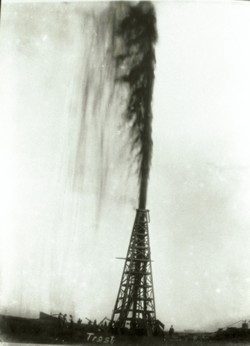
Anthony Lucas (Antun Lucic) invented the so called "Christmas tree", which is the system of valves and pipes installed on the wellhead to harness a gusher. The "Christmas tree" is connected to the piping for transportation or storage of oil.
Christmas tree invented by Anthony Lucas
in order to harness
a gusher (photo from [McBeth])
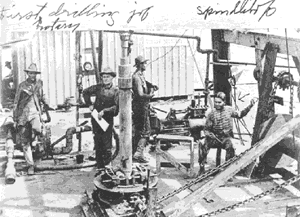
Anthony Lucas and drilling crew,
photo from Math/Science
Nucleus for children

Spindle Top, congestion of derrics in 1901-1902 (photo from [McBeth])
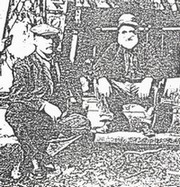
Antun Lucic (Anthony Lucas) on the left (photo from [McBeth])
The naval fuel board program adopted by the USA Government in 1901 specified that all the vessls should be equiped for the burning of oil as fuel. Railroads in increasing number were using it, and manufacturers were substituting it for coal and gas. At that time the automobile industry just began to develop, and the importance of Lucic's discovery for its further expansion was enormous.
Spindle Top in 1902
Antun Lucic is also considered to be the founder of modern petroleum reservoir engineering. He was consulting engineer in USA, Russia, Mexico, Algeria, and Romania. As an expert in mining he was elected the life long chairman of the American Committee for Oil and Gas (later called Petroleum Division, more information). In 1936 The American Institute for Geological and Metallurgical Investigations founded a prize named after him: Anthony F. Lucas Gold Medal.

A museum with 18 m high granite obelisk was built in honour to the Lucas gusher in Spindletop. There is also 1,5 m granite monument of Lucic with inscription saying that his discovery revolutionarized industry and transport,... and changed lives of people in the whole world.

18 m high granite obelisk, built in honour
to the Lucas
gusher, Spindletop, contains the following lines:
| On This Spot on the Tenth Day of the Twentieth Century a New Era in Civilization Began |
In 1943 Lucas' son and daughter-in-law established charitable foundation in his name.
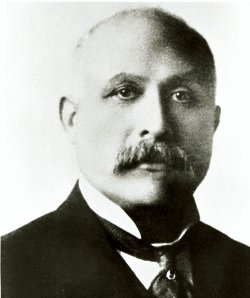
Antun Lucic (Anthony F. Lucas) is placed among 200 of most deserving Americans in the course of the entire history of the USA. There are a street and an Elementary school bearing his name in the City of Beaumont, Texas.
As to his nationality, it is often mistakenly described as Austrian, and sometimes even Italian (like in Who is Who in America, where there is also another mistake - that he was born in Trieste). On his grave in Rock Creek, Washington, he is said to be of Illiric origin, where Illiric is a standard name for Croatian. For more information about Anthony Lucas see here, and also
- Lucas, Anthony Francis (The Handbook of Texas)
- Who Was Anthony F. Lucas? (for children)
- Anthony (Luchich) Lucas
- www.spindletop.org, where he is wrongly designated as "Austrian"
- Spindletop, Texas
- James Anthony Clark and Michel T. Halbouty: Spindletop, New York, Random House, 1952
- Everett DeGoyler: Anthony F. Lucas and Spindletop, Southwest Review 30, Fall 1945
- Reyd Sayers McBeth: Pioneering the Gulf Coast; a story of the life and accomplishments of Capt. Anthony F. Lucas, New York 1918; reprinted and revised by INA Naftaplin in Zagreb, 1998, ISBN 953-96949-5-7, translation into Croatian - Antun Lucic, Zacetnik traganja za naftom na obali meksickog zaljeva, ISBN 953-96949-4-9
 Dragutin Gorjanovic Kramberger (1856-1936)
was a professor
of geology and paleontology at the University of Zagreb. He
discovered the richest collection of remains of Diluvial Neanderthal people
in the world
on a site not far from
Zagreb (Krapina). He was the first man in
history to have used X-rays to analyze fossil bones (X-rays
were discovered by
Nikola Tesla).
Dragutin Gorjanovic Kramberger (1856-1936)
was a professor
of geology and paleontology at the University of Zagreb. He
discovered the richest collection of remains of Diluvial Neanderthal people
in the world
on a site not far from
Zagreb (Krapina). He was the first man in
history to have used X-rays to analyze fossil bones (X-rays
were discovered by
Nikola Tesla).
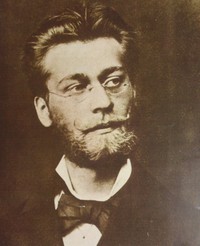
Dragutin Gorjanovic Kramberger, links
 Josip (Juan) Vucetic (1858-1925),
a criminologist and anthropologist born on the island of Hvar, lived in Argentina.
He was one of the pioneers of the scientific dactyloscopy (identification
by fingerprints) and occupied the position of the director of the Center for
Dactiloscopy in Buenos Aires. His method of identification was in use throughout
South America. Vucetic was also the one who introduced the notion of dactyloscopy in
1920, now in current use worldwide.
Josip (Juan) Vucetic (1858-1925),
a criminologist and anthropologist born on the island of Hvar, lived in Argentina.
He was one of the pioneers of the scientific dactyloscopy (identification
by fingerprints) and occupied the position of the director of the Center for
Dactiloscopy in Buenos Aires. His method of identification was in use throughout
South America. Vucetic was also the one who introduced the notion of dactyloscopy in
1920, now in current use worldwide.
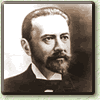
Vida y obra de Juan Vucetich in Spanish,
offered by Argentinean Escuela de Policia, and in English.About 250,000 Croats live in Argentina today. It is interesting that in 1933 the Croatian community in Argentina collected about 50,000 signatures asking for the right of the Croats to live in the free and independent state. Similarly in the USA.
The scientific activity of Vladimir Varicak (1865-1942), professor of mathematics at the University of Zagreb, was mainly in non-Euclidean geometry and its applications to Einstein's theory of relativity. His lecture delivered in 1911 at the German Mathematical Society in Karlsruhe has been published in 1912 in Jahresberichte der Deutschen Mathematike Vereinigung, and translated from German into Polish (Warszaw, 1913), Russian (St. Petersburg, 1914), French (Paris, 1914). His most important work is the monograph Darstellung der Relativitätstheorie im dreidimensionalen Lobatschefskijschen Raume, Zagreb, 1924, which has been been cited by many authors to these days.
The results of his work have been cited also in Wolfgang Pauli's Relativitätstheorie. One of his students at the University of Zagreb was Vilim Feller, that is, William Feller, a famous Croatian - American mathematician.
Eduard (Slavoljub) Penkala (1871-1922), born in Slovakia to a Polish/Dutch family, became naturalized Croat when after his marriage his family immigrated to Zagreb. He invented the mechanical pen in 1906 and fountain pen in 1907 which are bearing his name and now they are in everyday use.
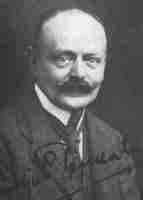

His first invention was a rasin bottle filled with hot water, called Termofor (hot water bottle), used in bed as "central heating" during cold nights.
Penkala invented a new plastic mass substance called ebonite, and used it for production of gramopne records. He then signed a contract with the Edison-Bell company, England, and a new company Edison-Bell-Penkala Ltd. was founded in Zagreb which started the production of gramophone records based on his original technology.
www.penkala.net
www.toz-penkala.hr
Another constructor of airplanes was Ivan Saric, who had been flying in Subotica in 1913 (only 10 years after brothers Wright).
Stanko Hondl (1873-1971), professor of physics at the University of Zagreb, has a great merit for popularizing Einstein's theory of relativity in Croatia. One of his students was William Feller, outstanding Croatian - American mathematician.
Jaroslav Havlicek was born in Croatia, in Garesnica (1879 - 1950), of the Czech nationality. His steam boiler fed by coal powder represented a revolution in building large power supplies. A reputed journal Applied Mechanic's Review included him among 10 most important personalities in the history of energetics (besides Volta, Fermi, Edison, Tesla). His major inventions were completed during his stay in Brno (Czechia). Since 1919 he was a professor in Zagreb.
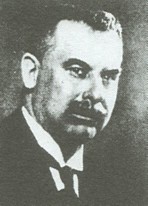
![]()

Franjo Hanaman (1878-1941), chemist and metallurgist, invented together with Aleksandar Just the first economical electric bulb with wolfram filament. During 1910, when Hanaman sojourned in the USA, his patent rights have been bought by the General Electric Co.
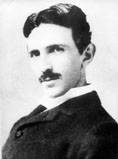 Nikola Tesla (1856-1943), born in Croatia (at that time within
Austria-Hungary), is well known and need not be particularly introduced.
We feel it is necessary to cite
his words that he was equally proud of his Croatian motherland and Serbian
descent.
He completed his elementary and secondary school education in
Croatia (in Gospic and Karlovac), and studied in Graz and Prague. He
is the father of alternating electrical current technology and the three
phase system. He is equally known by his contribution to the high frequency
technology and wireless communications. The impact of Tesla's numerous
inventions (112 patents during his work in the USA) on the development
of modern civilization is immeasurable. The unit for magnetic induction Tesla,
was named after
him (Conference general des poids et mesures, Paris, 1960). He refused
to receive the Nobel prize which he had to share with T.A. Edison.
Nikola Tesla (1856-1943), born in Croatia (at that time within
Austria-Hungary), is well known and need not be particularly introduced.
We feel it is necessary to cite
his words that he was equally proud of his Croatian motherland and Serbian
descent.
He completed his elementary and secondary school education in
Croatia (in Gospic and Karlovac), and studied in Graz and Prague. He
is the father of alternating electrical current technology and the three
phase system. He is equally known by his contribution to the high frequency
technology and wireless communications. The impact of Tesla's numerous
inventions (112 patents during his work in the USA) on the development
of modern civilization is immeasurable. The unit for magnetic induction Tesla,
was named after
him (Conference general des poids et mesures, Paris, 1960). He refused
to receive the Nobel prize which he had to share with T.A. Edison.
 Windows of the building of Electricité
de Strasbourg in France,
where Tesla had worked for some time, have inscriptions with
names of outstanding scientists. There you can see his name surrounded with
Laplace, Planck, Bohr, Einstein and Rutherford (click on the
left).
In front of the building of International Union for Telecommunications
in Geneva there is a statue of Nikola Tesla.
When his mother died, he paid a visit to Croatian capital
Zagreb in 1892, where
he gave a lecture about alternating current.
On that occasion he said:
Windows of the building of Electricité
de Strasbourg in France,
where Tesla had worked for some time, have inscriptions with
names of outstanding scientists. There you can see his name surrounded with
Laplace, Planck, Bohr, Einstein and Rutherford (click on the
left).
In front of the building of International Union for Telecommunications
in Geneva there is a statue of Nikola Tesla.
When his mother died, he paid a visit to Croatian capital
Zagreb in 1892, where
he gave a lecture about alternating current.
On that occasion he said:
As a son of my homeland I feel it is my duty to help the city
of Zagreb in every respect with my advice and work
(Smatram svojom duznoscu da kao rodjeni sin svoje zemlje pomognem
gradu Zagrebu u svakom pogledu savjetom i cinom; photo),
 and
suggested to build alternating current power plant. There is no doubt
that by saying "homeland" he meant Croatia. In 1931, at the age of 75,
Tesla received birthday greetings from Lee de Forest and Albert
Einstein. His monument carved by Ivan Mestrovic,
who knew him personally, can be seen in Zagreb. After the end of World
War II, the famous sculptor was asked by Belgrade officials to prepare
Tesla's monument for the capital of Yugoslavia, but he refused, explaining
that Tesla did not like the city. By the way, the family name Tesla does
not exist in Serbia. Another monument, carved by Croatian sculptor Frano
Krsinic, can be seen near Tesla's hydro power plant on Niagara Falls.
A part of Technical Museum in Zagreb is dedicated to Nikola Tesla. According
to some recreational sources on WWW, four greatest geniuses in the history
of Mankind are Gutenberg, Edison, da Vinci, and Tesla (in this order).
There is not doubt that with a different homeland Tesla's position on
the list would be much higher. Even today, so many years after Tesla's
death (1943), his numerous manuscripts are kept as top secret by the Ministry
of Defense of the USA (see Margaret Cheney, Tesla: Man Out of Time,
Prentice Hall, 1981; Vladimir Muljevic, Nikola Tesla, slavni izumitelj,
Hrvatska zajednica tehnicke kulture, Zagreb, 2000, p. 75.)
and
suggested to build alternating current power plant. There is no doubt
that by saying "homeland" he meant Croatia. In 1931, at the age of 75,
Tesla received birthday greetings from Lee de Forest and Albert
Einstein. His monument carved by Ivan Mestrovic,
who knew him personally, can be seen in Zagreb. After the end of World
War II, the famous sculptor was asked by Belgrade officials to prepare
Tesla's monument for the capital of Yugoslavia, but he refused, explaining
that Tesla did not like the city. By the way, the family name Tesla does
not exist in Serbia. Another monument, carved by Croatian sculptor Frano
Krsinic, can be seen near Tesla's hydro power plant on Niagara Falls.
A part of Technical Museum in Zagreb is dedicated to Nikola Tesla. According
to some recreational sources on WWW, four greatest geniuses in the history
of Mankind are Gutenberg, Edison, da Vinci, and Tesla (in this order).
There is not doubt that with a different homeland Tesla's position on
the list would be much higher. Even today, so many years after Tesla's
death (1943), his numerous manuscripts are kept as top secret by the Ministry
of Defense of the USA (see Margaret Cheney, Tesla: Man Out of Time,
Prentice Hall, 1981; Vladimir Muljevic, Nikola Tesla, slavni izumitelj,
Hrvatska zajednica tehnicke kulture, Zagreb, 2000, p. 75.)
Technical Museum in Zagreb, about Tesla's inventions (rotating egg, Tesla's three phase generator, Tesla's transformer, Tesla's remote control boat, etc).
It seems that Nikola Tesla was the first one to discover the electron. This can be seen in his article "Reply to J.J. Thomson's note", published in Electrical Engineer, New York, August 26, 1891. In this article Tesla claims that his experiments prove the existence of charged particles ("small charged balls"), while J.J. Thomson denied this. It was only five years later that Thomson proved the existence of electron using another experiment. See [Centuries of Natural Sciences in Croatia 2, p. 62, article by academician Vladimir Paar, outstanding Croatian physicist].
The Supreme Court of the USA overturned Marconi's patent of modern radio in favor of Nikola Tesla in 1943, soon after his death. Tesla died in New York, in circumstances close to poverty.
- Nikola Tesla, numerous links
- Nikola Tesla,
the man who invented the modern world
for example Tesla has indisputable priority in inventions of modern radio, X-rays, vacuum tube amplifier, radar, first robots, etc. - The Complete Patents of Nikola Tesla
- Nikola Tesla, forgotten American scientist, by John W. Wagner
- My Inventions, The Autobiography of Nikola Tesla
It is interesting that in Bartol Kasic's dictionary of Croatian language (16/17 centuries) one can find the name of "tesla", meaning adze. The word tesla (adze) is without any doubt related to Croatian words tesar - carpenter, tesati - to trim (a log), to dress (a stone).
Among scientists studying seismology the famous Moho-layer (or Moho-discontinuity) of the Earth is well known. It was named after the great Croatian geophysicist Andrija Mohorovicic (born in Volosko, 1857-1936), professor at the University of Zagreb. His discovery was essential for understanding the inner structure of the Earth and the behavior of seismic waves. Together with the theory of forces due to Rudjer Boskovic, this is probably the greatest achievement in the history of Croatian science.

...As a boy of 15 he spoke Italian, French, and English as well as his native Croatian, later added German, Czech, Latin, and old Greek. He studied physics at the University of Prague under some famous professors including E. Mach and did his graduate work at the University of Zagreb, from which he obtained a Ph.D. In 1894 Dr. Mohorovicic became Director of the Institute for Meteorology and Geodynamics and Professor at the University of Zagreb in 1897, where he remained until his retirement in 1921. His special interest was the precise measurement of time for both astronomical and seismical events, but his reputation mainly rests on his classic paper in the field of seismology, The Earthquake of October 8, 1909, which contains the news of his discovery of a major discontinuity at a depth of 55 kilometers. This discontinuity, now generally known as the Moho in his honor, defines the crust of the earth. Professor Mohorovicic died in 1936 in circumstances approaching poverty.

Photo from an article by Mete Oner: Deepest borehole ever drilled
Two Croatian names appear on the map of the Moon. The name of Rudjer Boskovic was given to a mountain on the visible side, and the name of Andrija Mohorovicic to a mountain on the dark side of the Moon.
Andrija Mohorovicic, links
Mohorovic made pioneering observations of rotor-type circulation in bora. For more information see the following article:
Vanda Grubisic and Mirko Orlic: Eearly observations of rotor clouds by Andrija Mohorovicic [PDF], Bulletin of the American Meteorological Society (vol. 88, 2007, str. 693-700) [many thanks to dr. Orlic, University of Zagreb, for the PDF]
Stjepan Mohorovicic (1880-1980), professor of physics at a grammar school in Zagreb, made a very important theoretical discovery of the positronium (rotational pair of electron and positron) as early as in 1934, published in "Astronomishe Nachrichten", a prestigeous German scientific journal (precise reference is A. Mohorovicic, Astron. Nachr. 253, 94 (1934)). Its existence was confirmed experimentally in 1951 by Martin Deutsch, MIT physicist (and a member of Manhattan Project). Still earlier, in 1927, Stjepan Mohorovicic predicted the existence of the MOHO-layer on the Moon, analogous to that of the Earth, discovered by his father Andrija Mohorovicic. Its existence has been proved in 1969 during the famous Apollo 11 flight to the Moon. Seismic measurements have been carried out by Neil Armstrong and Edwin Aldrin, the first humans to land on the Moon.
As an explorer, Dragutin Lerman (1863-1918) was a member of Stanley's expedition to Congo (Zaire), and a commissary (Commissaire General) of the Belgian government in Congo. By the end of his career the Belgian king Leopold conferred the knighthood of Lion's order on him. And the famous Stanley wrote: "The Croat is energetic, cautious, in high spirits..." It is interesting that in 1882 Lerman discovered huge waterfalls on the river of Kwil, which he named the Zrinski Waterfalls (Zrinski chutes), in honour of a famous Croatian family of rulers. He donated about 500 artifacts related to various traditional African cultures to the Ethnographic museum in Zagreb.
Misionar na Gornjem Nilu, Damir Zoric
Brothers Mirko (Karlovac 1871-Peru, 1913) and Stevo Seljan (Karlovac 1876-Ouro Preto, Brazil 1936) spent several years in Ethiopia carrying out geomorphological, climatological and ethnographic investigations.
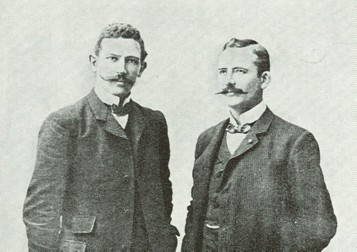
They occupied an important position at the court of Ethiopian Emperor Menelik II. Later they went to South America, where they founded the society La Mission Cientifica Croata Mirko y Stevo Seljan and organized some expeditions, especially in Peru, Chile and Brazil (in the region of the Amazon).
Ethiopian
Star and The Solomon's Knight Cross,
decorations awarded by Emperor Menelik II to brothers Seljan
A gift of Emperor Menelik II to Mirko Seljan,
with inscription on gold plated sword:
Ethiopia raises its hands to God (in Amharic)
A charter bestowed by Emperor Menelik II
to brothers Seljan
with inscription in Amharic
Their most important book is Mirko and Stevo Seljan, El Salto del Guayra, 1905, Buenos Aires. Origianlly written in Croatian, so that it could be printed in the United Kingdom of Croatia, Slavonia, and Dalmatia, it was translated already in 1905 into French. In 1913 Stevo Seljan was elected as a honorary member of the Mexican Geographical Socitey.
Photos from Aleksandra Sanja Lazarevic: Zivot i djelo brace Seljan, Etnografski muzej u Zagrebu, 1977.
- Los hermanos Seljan, exploradores en África y Sudamérica, Lelio Janin, Buenos Aires
- Misionar na Gornjem Nilu, Damir Zoric
Henry Suzzallo (originally Zucalo, 1875-1933) was president of the University of Washington from 1915 to 1926. The central library of the University of Washington is called Suzzallo Library. His parents Petar and Ana Suzzallo, Croatians originating from Dalmatia, arrived to San Francisco in 1852.
One of the most outstanding representatives of photochemistry was Ivan Plotnikov (1878-1955), a Russian emigrant to Croatia (1918) and a professor of physical chemistry in Zagreb.
 Milan
Sufflay (1879-1931), was a brilliant Croatian
historian and polyglot of international reputation, known by his numerous
scientific contributions, especially in the field of albanology. His mother
was a German from Hungary, and his father a Croat. In 1913 and in 1918, in
cooperation with Konstantin Jirecek and Ludwig von Thalloczy,
he published two volumes of Acta Albaniae (Acta et Diplomata
res Albania mediaevalis illustrantia) in Vienna, in the Latin language.
It covers the history of Albania from 344 AD to 1406. His monograph
Srbi i albanci (Serbs and Albanians), 1925, has been translated
into French and English (English translation from Croatian original by Theresa
Alt and Wayles
Browne, Cornell University, USA). From 1908 till 1918 Sufflay was professor
of the University of Zagreb. From 1918 onward he was not allowed to lecture
any more, and the ex-Yugoslav government in Belgrade did not allow him to
visit Hungary,
Italy,
and the
Vatican for
scientific archival work. It was forbidden for him to accept the position
of professor offered to him by the University of Budapest in Hungary. Despite
all this, Sufflay planned to publish a continuation of Acta
Albaniae in
four additional volumes. The project had been financed by the Albanian
King
Zogu and the government of the state, and Sufflaz even delivered a lecture
in the building of the Albanian Parliament in Tirana in Albanian language
about
his project. The financial support equivalent to today's 3,000,000 USD had
been deposited in a Swiss bank.
Milan
Sufflay (1879-1931), was a brilliant Croatian
historian and polyglot of international reputation, known by his numerous
scientific contributions, especially in the field of albanology. His mother
was a German from Hungary, and his father a Croat. In 1913 and in 1918, in
cooperation with Konstantin Jirecek and Ludwig von Thalloczy,
he published two volumes of Acta Albaniae (Acta et Diplomata
res Albania mediaevalis illustrantia) in Vienna, in the Latin language.
It covers the history of Albania from 344 AD to 1406. His monograph
Srbi i albanci (Serbs and Albanians), 1925, has been translated
into French and English (English translation from Croatian original by Theresa
Alt and Wayles
Browne, Cornell University, USA). From 1908 till 1918 Sufflay was professor
of the University of Zagreb. From 1918 onward he was not allowed to lecture
any more, and the ex-Yugoslav government in Belgrade did not allow him to
visit Hungary,
Italy,
and the
Vatican for
scientific archival work. It was forbidden for him to accept the position
of professor offered to him by the University of Budapest in Hungary. Despite
all this, Sufflay planned to publish a continuation of Acta
Albaniae in
four additional volumes. The project had been financed by the Albanian
King
Zogu and the government of the state, and Sufflaz even delivered a lecture
in the building of the Albanian Parliament in Tirana in Albanian language
about
his project. The financial support equivalent to today's 3,000,000 USD had
been deposited in a Swiss bank.
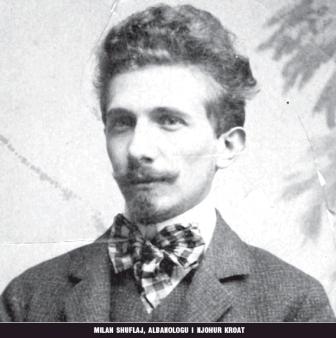
Sufflay was assassinated by a steel rod on a street in the center of Zagreb in 1931, at the age of 52. After the dramatic events that followed, Albert Einstein and Heinrich Mann sent an appeal to the International League of Human Rights in Paris to protect Croats from the terror and persecutions of the Serbian police. It was also published in the New York Times (6th May 1931). As we learn from this letter, the newspapers in Zagreb were not allowed to report about Sufflay's activity; it was not allowed to attach a half-mast flag on the main building of the University of Zagreb in his honour; the time of the funeral could not be announced publicly, and even condolence messages were not allowed to be telegraphed. In their letter Einstein and Mann hold the Yugoslav king Aleksandar explicitly responsible for the state terror over the Croats. The letter concludes that it should not be tolerated that killings be allowed as a means to achieve political goals. We should not allow killers to be promoted as national heroes. He is the author of the first Croatian SF (science fiction) novel Na Pacifiku 2255. In 2002, an international congress "Shuflaj dhe Shqiptarët", dedicated to Milan Sufflay, the pioneer of albanology, has been organized in Tirana, capital of Albania. Alfred Moisiu, president of Albania, posthumously decorated Milan Sufflay with the order of "Naim Frasheri d'or". Sufflay's written opus comprises about 3000 items.
- Albert Einstein and Heinrich Mann: Appeal on the occasion of killing of Professor Milan Sufflay in Zagreb
- New York Times (May 6, 1931): Einstein Accuses Yugoslavian Rulers in Savant's Murder,
- A Letter of Protest sent by American intellectuals organized by Roger N. Baldwin, Chairman of the International Committee for Political Prisoners, to the Yugoslav representative in Washington on November 24, 1933.
- NË DUBROVNIK, TË DHËNA TË REJA PËR MILAN SHUFLAJ, in Albanian
Peruvian Croat Juan (Jean) Bielovucic (1889-1949) was one of the first aviators in history. In 1913 he traversed for the first time the Alps by monoplane (20km in 26 minutes), reaching the height of 3200 m. In 1911 he performed the first flight in his native Peru, in the presence of the president of the state. He was one of the founders of Peruvian aviation. Bielovucic was also director of the Aviation School of Reims. See the monograph by Jose Zlatar - Stambuk: Bielovucic - pionero da la aeronautica Castrense, Lima 1990.
Le raid Paris - Bordeaux de Jean Bielovucic
Ivan Jagsic (1886-1956), born as a Burgenland Croat in Austria, studied cartography, topography and geology in Zürich. As a professor of University of Cordoba, Argentina, he lectured also meteorology and astronomy, and wrote numerous scientific books. The South American Oceanographic Institute in Brazil was named after him.
Rudolf Fizir (1891-1960), born in Ludbreg in Croatia, built 18 airplanes. He was awarded the Paul Tissandier Diploma by the F.A.I. (Fédération Aeronautique Internationale), for his achievements in developing world aviation. With his two-wing aircraft Fizir, constructed in 1925, he won the first prize at the Petite Entente contest in 1927. From then on began his serial aircraft production in cooperation with well known companies: the Fizir-Mercedes, the Fizir-Wirght, the Fizir-Titan, the Fizir-Kastor, the Fizir-Gypsi, and the half-metallic Fizir-Jupiter.
He also reconstructed some models into hydroplanes. His great success was Fizir FN, two-wing, two-seat aircraft with double commands (more than hundred planes!). It was used as instruction plane even 30 years after the end of the WW2! In 1931 he constructed amphibious aircraft, Fizir 1931, intended for landing on rivers, lakes and the sea. He also constructed a tourist aircraft as early as 1935. He also constructed parachutes, like its inventor Faust Vrancic. During the WW2 he worked in Zagreb, lecturing aircraft construction at the Technical Faculty. After the WW2 he worked in the Industrial Research Institute in Zagreb. For more information see CROATIA, in flight magazine, Automn 2000, pp. 89-99.
Stefan Gelineo, Croat by birth, born in Stari Grad on the island of Hvar (1898-1971), studied in Leipzig and Vienna. He was the professor of physiology at the University of Belgrade (capital of Serbia and former Yugoslavia). He is internationally known by his contributions to the study of hypothermia, i.e. the study of vital functions under low temperatures.
Stjepan Mlakic (1844-?) Bosnian Croat born in Fojnica, a missionary in Africa among the tribes of Shiluks and Nuers in Sudan, like his colleague Kohnen. Very educated, besides his native Croatian he spoke German, Italian, English and Arabian, to which he added the language of Nilot tribe of Nuers. His letters to his brother (also a priest) in Bosnia witness about his very close contacts with Africans. It is worth to note his discovery that in Egypt, near the town of Korsko, there is the village of Ibrim, where used to live Bosnian Muslims (!) inhabited there by a Turkish sultan. He donated a rich collection of artifacts of African culture to the Zagreb Ethnographic museum. See [Zoric].
Bernardo Kohnen (1876-1937), German by birth, born near Hannover, moved as a young boy with his parents to Bosnia, where he attended the famous Jesuit gymnasium in Travnik. He devoted about 30 years of his life to the evangelization and study of life of Shiluks (southern Sudan), at that time one of the most isolated tribes in Africa, and other Nilot tribes (Denka, Nuer, etc). "Father Shiluk", as he was called by the Shiluks themselves, wrote first dictionaries, grammars, and translated holly and liturgical books into their language, praised by the english scholars. Although born as German, Kohnen spoke and wrote in Croatian. He donated some of the artifacts of African culture to the Zagreb Ethnographic museum. See [Zoric].
Fran Bosnjakovic (1902-1993), born in Zagreb, was one of world's leading experts in technical thermodynamics. Educated in Zagreb, where his scientific career started in 1926, he moved to Dresden, Germany, in 1928. In 1931 he became university teacher at Dresden High Mechanical Engineering School. After a short stay in Belgrade, he moved back to the University of Zagreb in 1936. After 1945, during the Yugoslav communist regime, he was degraded to two years of forced labor. In 1951 he became rector of the University of Zagreb.
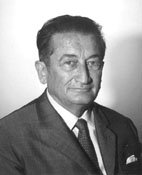 Since 1953 he started lecturing at the High technical school in
Braunschweig in Germany, where he became head of the Department
for thermodynamics and director of the Thermotechnical institute.
In 1961
he founded the Institute of Thermodynamics for Aeronautics
and Astronautics at the University of Stuttgart, Germany, that he led
until his retirement in 1968. He also established groups for
Irreversible Thermodynamics,
Mass Transfer and Thermokinetics,
Radiation and Plasma,
and Heat Transfer.
It is interesting that his textbook Technische
Thermodynamik,
published already in 1935 in Dresden, had seven improved and
extended
editions in Germany, and was
translated into English (Technical Thermodynamics) and Russian
(Tehnicheskaya termodinamika). The Croatian translation had
five editions (Nauka o toplini).
See his list of publications held at the
University of Stuttgart.
Since 1953 he started lecturing at the High technical school in
Braunschweig in Germany, where he became head of the Department
for thermodynamics and director of the Thermotechnical institute.
In 1961
he founded the Institute of Thermodynamics for Aeronautics
and Astronautics at the University of Stuttgart, Germany, that he led
until his retirement in 1968. He also established groups for
Irreversible Thermodynamics,
Mass Transfer and Thermokinetics,
Radiation and Plasma,
and Heat Transfer.
It is interesting that his textbook Technische
Thermodynamik,
published already in 1935 in Dresden, had seven improved and
extended
editions in Germany, and was
translated into English (Technical Thermodynamics) and Russian
(Tehnicheskaya termodinamika). The Croatian translation had
five editions (Nauka o toplini).
See his list of publications held at the
University of Stuttgart.
Professor Bosnjakovic obtained honorary doctorate from High Technical School RWTH Aachen, Grashof's medal from the German Society of Engineers VDI in 1969, gold medal from the Associazione Termotechnica Italiana in Padova in 1966, another gold medal from the Institut français des combustibles et de l'énergie in Paris. On the occasion of his 80'th birthday in 1982 the German Society of Engineers VDI issued a special publication devoted to his scientific work. In 1987, on the occasion of his 85'th birthday, a solemn colloquium was organized by the Technical University of Stuttgart. Also, he was a member of
- Academies in Heidelberg (Heidelberger Akademie der Wissesnschaften),
- Braunschweig (Braunschweigsche Wissenschaftliche Gesellschaft),
- Assoziazione Termotecnica Italiana in Padova, 1966 (recipient of gold medal),
- Istituto Veneto di Scienze, Lettere ed Arti in Venice,
- honorable member of Institut International du Froid (International Institute of Refrigeration) since 1960,
- Institut francais des combustibles et de l'energie, 1970 (recipient of the medal),
- Croatian Academy of Sciences and Arts (1992, i.e., only after the fall of ex Yugoslavia, and a year before the death of Bosnjakovic).
Denn das Ingenierwessen is vor allem auch ein Beruf des Könnes und der verantwortungsvollen Gestaltung, wofür wissenschaftliche Grundlagen nur einen, wenn auch beachtlichen, notwendigen Teil bilden.
ECOS 2002 International conference, organized by the Institute for Energy Engineering at the Technical University of Berlin, has been dedicated to the memory of Fran Bosnjakovic.
Bosnjakovic's "Technische Thermodynamik" had till
the year 2000 altogether thirty editions in four languages (German,
English, Russian, and Croatian).
For more information see:
Fran Bosnjakovic, Spomenica posvecena 100. obljetnici rodjenja,
uredio Mladen Andrassy, Zagreb, 2001. ISSBN
953-6002-21-3
Danilo Blanusa (1903-1987), Croatian mathematician, professor at the University of Zagreb, was born in Osijek. He discovered a mistake in relations for absolute heat Q and temperature T in relativistic phenomenological thermodynamics, published by Max Planck in Annalen der Physik in 1908:
His work in graph theory resulted with what is now known as
- Blanusa's graph (in Croatian)
- Blanusa's Snark
- Blanusa's Snark at Wolfram Research
- Tomislav Petkovic: D. Blanusa’s formulae for heat and temperature transformations in relativistic thermodynamics and his correspondence with W. Pauli in 1948, [PPT]
It is not widely known that Max Planck visited the Croatian capital Zagreb in the automn 1942, when he was at the age of 84. He delivered a lecture at the University of Zagreb on September 15th, entitled "On the goals and boundaries of exact natural sciences" (sources: Priroda, Zagreb 1942, p 184, or Glasnik Mat. Fiz. Astr. 2, 1947, p 213).
William Feller (Vilim, Willy, Willi, 1906-1970) is a well known name among mathematicians dealing with probability theory. He was born and educated in Zagreb as Vilim Feller, where he studied mathematics, and earned the degree of Master of Science in mathematics in 1925. Already the next year, at the age of 20, he defended his doctoral degree in mathematics at the University of Göttingen, at that time the strongest mathematical center in the world. He was a professor at the Universities of Kiel, Copenhagen, Stockholm, Lund, Providence, Princeton etc., a member of many scientific organizations. Many important mathematical notions bear his name: Feller's process, Feller's transition function, Feller's semigroup, Feller's property. He is best known for his monograph "An Introduction to Probability Theory and its Applications", Volumes I and II, on 1153 pp., translated into Russian, Chinese and Polish. They are considered among the best mathematical textbooks written in the 20th century. At the International Congress of Mathematicians held in 1958 in Edinburgh, William Feller gave a plenary talk "Some new connections between probability and classical analysis."
For more information see William Feller (photo by Paul Halmos).
Feller was among those who initiated issuing the important Mathematical Reviews journal, and was its first executive editor (1944-1945). He worked with von Neumann, one of the creators of modern computers. Feller was awarded the National Medal of Science of the USA in 1969. He was in touch with his relatives in Zagreb, as well as with his colleagues at the University of Zagreb.
Joseph Doob, a renowned American mathematician, wrote about Feller the following:
Those who knew him personally remember Feller best for his gusto, the pleasure with which he met life, and the excitement with which he drew on his endless fund of anecdotes about life and its absurdities, particularly the absurdities involving mathematics and mathematicians. To listen to his lecture was a unique experience, for no one else could lecture with such intense excitement. No one could generated in himself as well as in his auditors so much intense excitement. In losing him, the world of mathematics has lost one of its strongest personalities as well as one of its strongest researchers.
Vilim Feller, extensive biography, with emphasis on his life in Zagreb, Croatia
Vladimir Jurko Glaser (1924-1984), theoretical physicist in the field of quantum fields theory, published one of the first monographs on Quantum Electrodynamics in the world (Kovarijantna kvantna elektrodinamika, Zagreb 1955, written in Croatian), at the age of 31. On p. 8 of the book he mentioned that the existence of positronium has been theoretically predicted by Stjepan Mohorovicic in 1934.
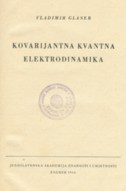 |
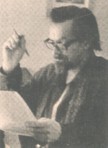 |
He was head of the Department of Theoretical Physics at the Rudjer Boskovic Institute in Zagreb. In 1957 he found permanent employment at the Department of Theoretical Physics in CERN in Geneva. Letters sent to Glaser by Wolfgang Pauli (nicknamed "the sword of theoretical physics") show Glaser's outstanding scientific status among theoretical physicists of his time. On the occasion of Glaser's death, during the commemoration held in CERN, prof. Henry Epstein said that he does not understand Croatian, but when in need for details and formulae, he prefers to consult Glaser's book (written in Croatian!), since it is reliable in all details. For more information see here (in Croatian).
One of our best theoretical physicists was Gaja Alaga (1924-1988), member of the Croatian nobility from Backa and Bunjevci Croat. He worked not only in Zagreb, but also at the Niels Bohr Institute in Copenhagen, Berkeley, Ludwig-Maximilians University in Munich etc. In 1955, in cooperation with K. Alder from Switzerland, A. Bohr from Denmark and B. Mottelson from the USA, he discovered the so called K-selection rules and intensity rules for beta and gamma transitions in deformed nuclei.
Nikola Cindro (1931-2001) was a Croatian physicist, descendant of very old Croatian nobility from 8th century, from Croatian south (Split, Poljica). He was lecturing in Zagreb, Frankfurt, Paris and Strasbourg, and occupied the position of vice president of European Physical Society. His high quality work was recognized also abroad: he was a member of Italian physical society and Officier dans l'Ordre des Palmes Academiques, Paris, 1997.
Zvonimir Janko (born in 1932 in Croatia), studied mathematics and earned his PhD at the University of Zagreb. He is professor of mathematics at the University of Heidelberg, Germany, and his name is well known among experts in the theory of finite groups. Professor Janko discovered sporadic groups named J1, J2, J3, and J4 in his honour. They are called Janko groups.

Zvonimir Janko in 2007, at the age of 75
(photo by dr. Mario Pavcevic, Zagreb)
The discovery of J1 in 1964, more than a century after the discovery of the first sporadic group, launched the modern theory of sporadic groups. His group J4, discovered in 1976, has
86 775 571 046 077 562 880
elements. About his research he delivered an invited lecture at the International Congress of Mathematicians in Nice, France, 1970.
- A.A. Ivanov (professor at Imperial College, London): The Fourth Janko Group (256 pp), Oxford Math. Monographs, 2005.
- Janko Groups at Wolfram MathWorld
- Janko Groups at Wikipedia
Eduard Prugovecki (1937-2003), outstanding Croatian theoretical physicist, was born in Craiova, Romania (his mother was Romanian of Polish descent, and his father was Croatian). Having completed his primary and secondary education in Bucharest, he moved with his family to Zagreb, where he studied physics and started his early scientific career. In 1961 he was sent to Princeton where he received his Ph.D. in 1964. The next year he emigrated to Canada, and since then worked at the University of Toronto. Professor Prugovecki wrote four monographs, and the last two are
- Quantum Geometry (Kluwer, 1992)
- Principles of Quantum General Relativity (World Scientific, 1995)
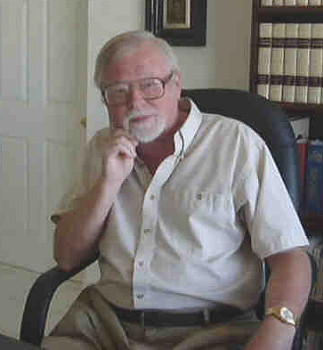
You can also see the names of three Croatian Nobel prize winners:
Lavoslav Ruzicka (1887-1976, born in Vukovar, of a Czech father and a Croat mother, attended the gymnasium of Osijek), obtained the Nobel Prize for discoveries in organic chemistry, professor at the Technische Hochschule in Zurich, Switzerland 1939; see Ruzicka links.
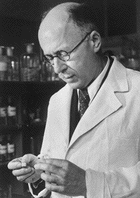
Vladimir Prelog, (1906-1998, a Croat born in Sarajevo, studied in Zagreb), obtained the Nobel Prize for discoveries in organic chemistry, worked at the Technische Hochschule in Zurich, 1975. As a young boy he was a stipendist of Napredak, Croatian cultural society in Bosnia and Herzegovina. See Prelog links. He wrote his authobiography, Vladimir Prelog: My 132 Semesters of Studies of Chemistry, American Chemical Society, Washington DC 1991 (second edition by Oxford University Press, Oxford, 1998). Prelog was among 112 Nobel Prize winner who signed and appeal For Peace in Croatia in 1992. He himself expressed on numerous occasions his public protest against the aggression on Croatia and BiH.
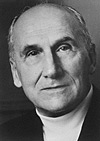
![]()
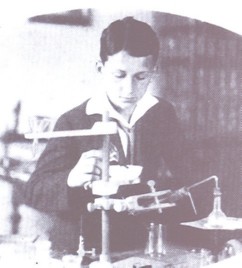
PLIVA is today the largest pharmaceutical company in Croatia and by sales, the largest in Central and Eastern Europe. Its best selling product is Sumamed antibiotic.
 Mario
Puretic (1917, born in Croatia in the town of Sumartin on the island
of Brac; his true name was Mario Puratic),
revolutionarized the technology of pulling out fishing nets from the
sea by his construction of what is
now known
as
the Puretic
Power Block in
1950s. Until then fishing nets had to
be
manually drawn by eight to ten people, which was an extremely difficult
job. The Marco Seattle company developed Puretic's idea, and it soon
became a standard
mean of
fishing
in the whole
world.
In 1975 the United States Patent Office conferred him a special recognition
for
his patent which revolutionarized the fishing technology worldwide. He
was elected among hundred greatest inventors of the 20th century in the
USA.
Mario
Puretic (1917, born in Croatia in the town of Sumartin on the island
of Brac; his true name was Mario Puratic),
revolutionarized the technology of pulling out fishing nets from the
sea by his construction of what is
now known
as
the Puretic
Power Block in
1950s. Until then fishing nets had to
be
manually drawn by eight to ten people, which was an extremely difficult
job. The Marco Seattle company developed Puretic's idea, and it soon
became a standard
mean of
fishing
in the whole
world.
In 1975 the United States Patent Office conferred him a special recognition
for
his patent which revolutionarized the fishing technology worldwide. He
was elected among hundred greatest inventors of the 20th century in the
USA.
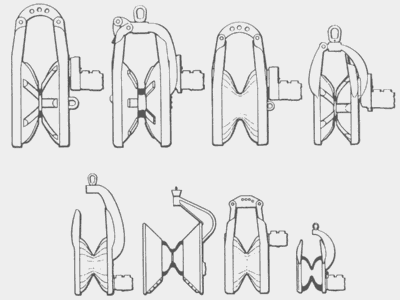
Variants
of the Puretic power block
source: FAO (Food and Agriculture Organization, UN)
In 1972 the National Bank of Canada issued a new series of 5 dollar banknotes with the Puretic Power Block on a fishing boat drawn on the reverse side! See here:
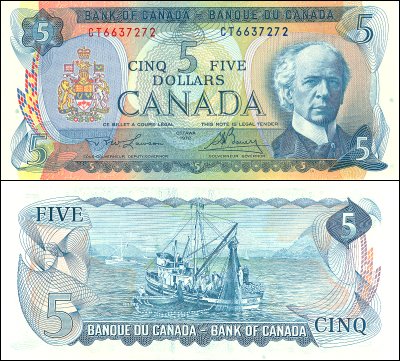
Source: Old
Salts - The Falkusa and Croatian Tourism,
at www.lifejacketadventures.com
When Mario Puretic died, his remains were brought from the USA to his native town of Sumartin in 1994. He was an honorary citizen of many countries, including Island (many thanks to Ms Nena Kazulin, USA, for this information).
For more details see
- Adam Eterovic: Mario Puretic, the King of Purse Seine Fishing
- Mario Puratic (in Croatian)
From Marco Seattle web site: No single invention has contributed more to the success of purse seine net hauling than Marco's extensive line of Power Blocks. First introduced in the 1950's the Puretic Power Block line became the linch-pin in the mechanization of purse seining. Combined with fluid hydraulic power technology and new large synthetic nets, it changed the whole character of purse seine fishing. From those early days the Marco Power Block has undergone many design improvements to provide the widest available range of sizes and power options to match changing requirements.
Ribarski uredaj PURETIC POWER BLOCK je namijenjen za izvlacenje i prikupljanje mreze na ribarskim brodovima.
Source: www.lifejacketadventures.com |
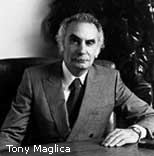 Anthony
Maglica, holder of hundreds of patents and trademarks,
founded Mag Instrument, Inc, in Los
Angeles in 1955, and
designed Mag-Lite flashlight, which is now an American product
icon, among 100 top products that "America makes best".
The Maglite products have been honored by the Japan
Institute of Design and the Museum for Applied Art in Germany.
Mag Instrument donated thousands of flashlights to aid in the
rescue efforts at the
World Trade Center and Pentagon in 2001.
Born in New York, and as a child raised in Croatia, Tony Maglica has plenty
of other interests which include also Zlarin, Croatia, where he
grew up.
Anthony
Maglica, holder of hundreds of patents and trademarks,
founded Mag Instrument, Inc, in Los
Angeles in 1955, and
designed Mag-Lite flashlight, which is now an American product
icon, among 100 top products that "America makes best".
The Maglite products have been honored by the Japan
Institute of Design and the Museum for Applied Art in Germany.
Mag Instrument donated thousands of flashlights to aid in the
rescue efforts at the
World Trade Center and Pentagon in 2001.
Born in New York, and as a child raised in Croatia, Tony Maglica has plenty
of other interests which include also Zlarin, Croatia, where he
grew up.
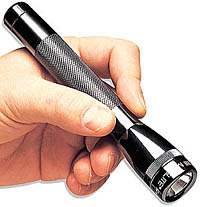
Agabekov SA is world's famous company seated in Geneva, Switzerland, dealing with exterior lighting design. Mr Youri Agabekov, the founder of the company, has Croatian roots: his father is Ladislav Zerjavic, from Hrvatsko Zagorje near Zagreb. His products have been used to cover with soft lighting such buildings like (photos by kind permission of Mr. Youri Agabekov):
- the Vatican
- Louvre, Paris
- Bolshoi Theatre, Moscow
- Saint Michel Bridge, Paris
- Palace of Sponza in Dubrovnik, Croatia
- Villa Astra in Lovran, Croatia
- Guernica by P. Picasso, Paris
- College de France, Paris
- Kingston Bridge, London
- Siltassari and Pitkäslita Bridges in Helsinki (Finland)
- Museum Arqueologic de Catalunya and Cathedral of Barcelona
- Cathedral of Palma de Mallorca, Spain
- Queen's Residence "Parlement" in Holland
- Princely Palace of Monaco
- National Museum Singapore
- Palacio National Mexico
- Banque Européenne in Bruxelles (Belgium)
- National Bank of Greece in Athens
- Bank of Luxemburg, etc.
Mr Youri Agabekov is a Croat born in Russia, living in Switzerland (Geneva) and in Croatia (Zagreb). His company, Agabekov SA, has 80 representatives throughout the world. Here is the logo of the company devoted to his wife Branka:
Light fixture, United States Patent 4158221 by Youri Agabekov; some of his patents are also held in Japan
Ralph Tony Sarich (born in 1938) is an Australian Croat who developed the Orbital Engine in 1972. He is a recipent of several prestigeous ingeneering awards like Australian Inventor of the Year 1972, Sir Lawrence Hartnett Inventors Award 1972, Churchill Medal, British Society of Engineers 1987 and Clunies Ross National Science and Technology Award 1991. His parents are Croatian immigrants to Australia.
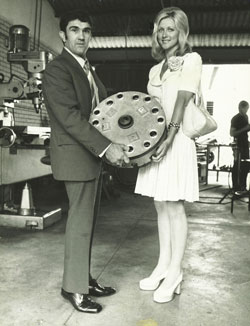
Miss Australia Michelle Downes visited Ralph Sarich's workshop
where she
was shown his revolutionary orbital engine in 1972.
Source business.thewest.com.au
Miroslav Radman élu à l'Académie des Sciences, France, 2002 (Biologie cellulaire et moléculaire)
Emilio Marin, associé étranger de l'Académie des Inscriptions et Belles-Lettres, 2003 (archéologie et histoire)
The service of buying parking tickets via mobile phones is today widespread worldwide. The service has been conceived and developed in Croatia.
Daniel D. Gajski, a hero of Computer Science. Prof.Dr. Franz Ramming wrote the following: "... Daniel Gajski did not just light the fire, he also fuelled it substantially. During the last three decades he achieved pioneering results. He was a principal contributor to the areas Silicon Compilation, High-Level Synthesis, and System-Level Design. ..."
Marin Soljacic is the author of the new Wireless Power Transfer, conceived in 1996. It attracted a substantial interest of the press (more than 200 articles in leading newspapers and radio-reports in numerous countries around the world, including: USA, Germany, Australia, Iran, India, Croatia, Greece, Spain, France, Italy, UK, Poland, Canada, the Netherlands, Thailand, Dominican Republic).

He is a young Croatian physicist born in the City of Zagreb, where he finished his secondary school education. Dr. Soljacic is employed as researcher at the Department of Physics, Massachussetts Institute of Technology (MIT), USA.
One of the most famous Croatian scientists is Professor Balthazar, born in Zagreb in 1967:

Croatian medicine
Croatia - an overview of its History, Culture and Science
